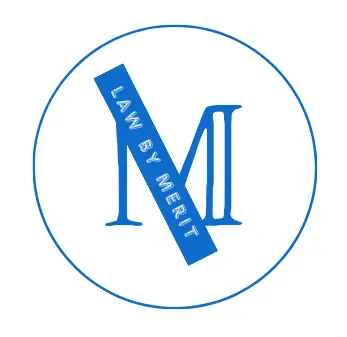In the tapestry of modern industrial relations, the term “labor union” stands as a cornerstone, embodying the collective voice and strength of workers across various sectors. From the clamor of factories during the Industrial Revolution to the contemporary complexities of globalized economies, labor unions have evolved into formidable entities shaping workplace dynamics, policy landscapes, and socio-economic structures. This exposition delves into the multifaceted essence of labor unions, exploring their historical roots, functions, significance, challenges, and future prospects.
Historical Evolution of Labor Unions
The origins of labor unions can be traced back to the emergence of industrialization, marked by the proliferation of factories, mass production, and the rise of wage labor. In the early 19th century, as industrial capitalism burgeoned, workers endured grueling conditions, paltry wages, and prolonged working hours devoid of legal protections or recourse. Faced with exploitation and marginalization, workers began to unite, forming early forms of collective action such as guilds, trade associations, and mutual aid societies. These nascent organizations laid the groundwork for the modern labor union movement.
The watershed moment in the history of labor unions is often attributed to the advent of the trade union movement in the 19th century, particularly in industrialized nations like the United Kingdom and the United States. The formation of trade unions, comprised of workers from specific trades or industries, heralded a new era of collective bargaining and advocacy for workers’ rights. Key milestones, such as the establishment of the American Federation of Labor (AFL) in 1886 and the Congress of Industrial Organizations (CIO) in 1935, galvanized labor solidarity and catalyzed transformative socio-economic reforms, including the adoption of labor laws, minimum wage standards, and workplace safety regulations.
What Is a Labor Union?
A labor union, also known as a trade union, is an organization formed by workers in a particular industry, trade, or occupation to protect and promote their collective interests. It acts as a representative body for employees, negotiating with employers on issues such as wages, working conditions, benefits, and workplace policies. The primary purpose of a labor union is to ensure that workers have a voice in decisions that affect their lives and livelihoods, striving to achieve fairness, equity, and dignity in the workplace.
One of the fundamental functions of a labor union is collective bargaining. This process involves negotiations between representatives of the union and representatives of the employer to reach agreements on issues such as wages, hours, benefits, and other terms and conditions of employment. Through collective bargaining, unions seek to secure fair wages, safe working conditions, job security, and other benefits for their members.
Labor unions also play a crucial role in advocating for workers’ rights and interests beyond the bargaining table. They engage in activities such as lobbying for pro-worker legislation, campaigning for workplace safety regulations, and fighting against discrimination and unfair labor practices. Additionally, unions provide support and representation to individual workers in cases of disputes with employers, including grievances, disciplinary actions, and terminations.
Functions of Labor Unions
Labor unions serve a myriad of functions aimed at safeguarding the interests and welfare of workers within the framework of industrial relations. At their core, labor unions function as representative bodies, articulating the collective concerns and grievances of workers to employers, government authorities, and other stakeholders. Through the mechanism of collective bargaining, unions negotiate with employers on behalf of their members to secure fair wages, benefits, working conditions, and employment terms.
Additionally, labor unions play a pivotal role in advocating for broader social and economic justice initiatives, including initiatives to address income inequality, gender pay disparities, workplace discrimination, and systemic injustices. By mobilizing their membership base and leveraging their collective influence, unions strive to advance progressive policies and enact legislative reforms conducive to fostering equitable and inclusive workplaces.
Moreover, labor unions serve as conduits for fostering solidarity and camaraderie among workers, fostering a sense of belonging, mutual support, and empowerment within the labor force. Through organizing activities, educational programs, and community outreach initiatives, unions cultivate a culture of mutual aid, empowerment, and grassroots activism, engendering a spirit of collective action and social cohesion.
Significance of Labor Unions
The significance of labor unions transcends mere collective bargaining or industrial advocacy; it embodies a broader ethos of social justice, democracy, and human dignity. At its essence, the labor union movement represents a counterbalance to the asymmetries of power and privilege inherent in capitalist economies, advocating for the equitable distribution of wealth, resources, and opportunities.
One of the paramount contributions of labor unions is their role in fostering economic security and upward mobility for workers. By negotiating for fair wages, benefits, and job protections, unions mitigate the vulnerabilities of precarious employment, poverty wages, and exploitative labor practices, thereby enhancing the material well-being and socio-economic resilience of working-class families.
Furthermore, labor unions serve as bulwarks against unchecked corporate power and neoliberal austerity measures that undermine workers’ rights and public services. Through advocacy campaigns, strikes, and political mobilization, unions push back against deregulation, privatization, and austerity policies that erode labor standards, social welfare programs, and democratic governance.
Additionally, labor unions have historically been at the vanguard of progressive social movements, championing causes such as civil rights, environmental justice, LGBTQ+ rights, and immigrant rights. By forging alliances with marginalized communities and social justice organizations, unions amplify their collective voice and leverage their organizational capacity to effectuate broader social change.
Challenges Facing labor Unions
Despite their enduring legacy and socio-political significance, labor unions confront an array of challenges in the contemporary landscape, ranging from legal constraints and institutional barriers to structural transformations in the global economy. One of the foremost challenges facing labor unions is the erosion of union density and membership rates, attributable to factors such as deindustrialization, globalization, and the proliferation of non-standard forms of employment.
Furthermore, labor unions grapple with legal impediments and anti-union tactics employed by employers and policymakers aimed at curtailing union organizing efforts, restricting collective bargaining rights, and weakening labor protections. The proliferation of right-to-work laws, anti-union propaganda, and employer-sponsored union-busting campaigns pose formidable obstacles to unionization drives and collective action.
Moreover, labor unions confront internal challenges stemming from demographic shifts, generational divides, and evolving workplace dynamics. As the composition of the labor force becomes increasingly diverse and fragmented, unions face the imperative of adapting their organizational structures, communication strategies, and advocacy priorities to resonate with the changing needs and aspirations of a multi-generational workforce.
Future Prospects of Labor Unions
Despite the formidable challenges confronting labor unions, the future outlook remains imbued with both challenges and opportunities for renewal, resilience, and resurgence. As the contours of the global economy undergo seismic shifts driven by technological innovation, climate change, and geopolitical realignments, labor unions are compelled to embrace innovation, adaptability, and strategic foresight to navigate the complexities of the 21st-century labor landscape.
One avenue for revitalizing the labor movement lies in harnessing the potential of digital technologies and social media platforms to amplify grassroots organizing, mobilize support, and cultivate solidarity among geographically dispersed workers. By leveraging digital platforms for communication, outreach, and advocacy, unions can transcend traditional barriers of time and space, mobilizing a broader base of support and amplifying their collective voice on a global scale.
Furthermore, labor unions have the opportunity to forge strategic alliances with progressive social movements, environmental organizations, and community-based groups to advance a common agenda of social justice, economic democracy, and environmental sustainability. By aligning their advocacy efforts with broader coalitions and social justice initiatives, unions can broaden their appeal, amplify their impact, and effectuate transformative change across intersecting spheres of socio-economic inequality and environmental degradation.
In conclusion, labor unions embody a rich tapestry of historical legacies, socio-political significance, and transformative potential within the fabric of modern industrial relations. From their humble origins amidst the tumult of industrialization to their contemporary role as champions of workers’ rights and social justice, labor unions have weathered storms of adversity, adaptation, and resilience. Despite facing formidable challenges in the form of legal constraints, economic transformations, and ideological opposition, labor unions remain vital agents of change, advocacy, and solidarity in the pursuit of a more just, equitable, and democratic society. As the global labor landscape continues to evolve in response to technological, economic, and social forces, the fate of labor unions hinges on their capacity to innovate, adapt, and mobilize collective action in pursuit of a brighter, more inclusive future for workers worldwide.
Last updated on: May 2, 2024




